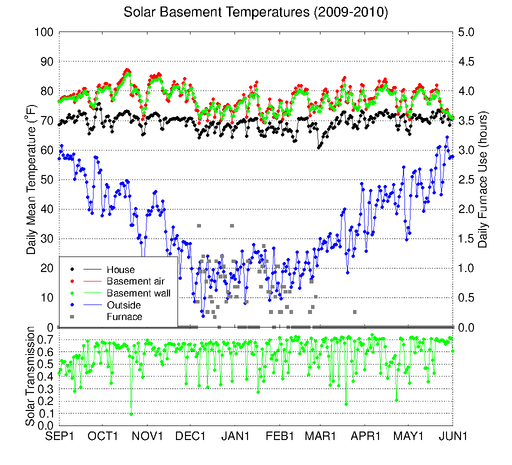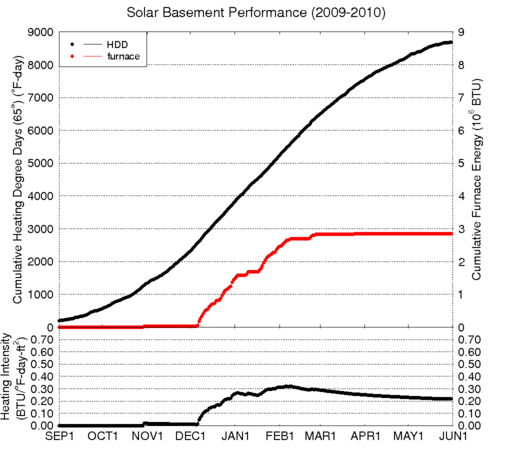Passive Solar Basement Efficiency

Click on the graph for a larger version.

Click on the graph for a larger version.
This season the furnace was used for 41 hours, consuming about 31 gallons of propane. In January 2010 we installed solar reflecting panels in front of the basement windows to increase the solar energy entering the basement during the spring when the solar elevation angle is increasing rapidly. The solar reflectors with adjustable tilt angle worked well, keeping the April average basement temperature 8 to 10 degrees warmer than previous years. As a result, the backup furnace was almost unused after March 1. Around May 22 we lowered the solar reflectors tilt angle from 28o to below 0o, which cooled the basement rapidly for the end of the heating season.
The ratio of BTUs to heating degree days divided by the floor area of the house (1508 square feet) is plotted in the lower panel. This ratio is called the heating intensity index, and is a measure of how efficient the house is.